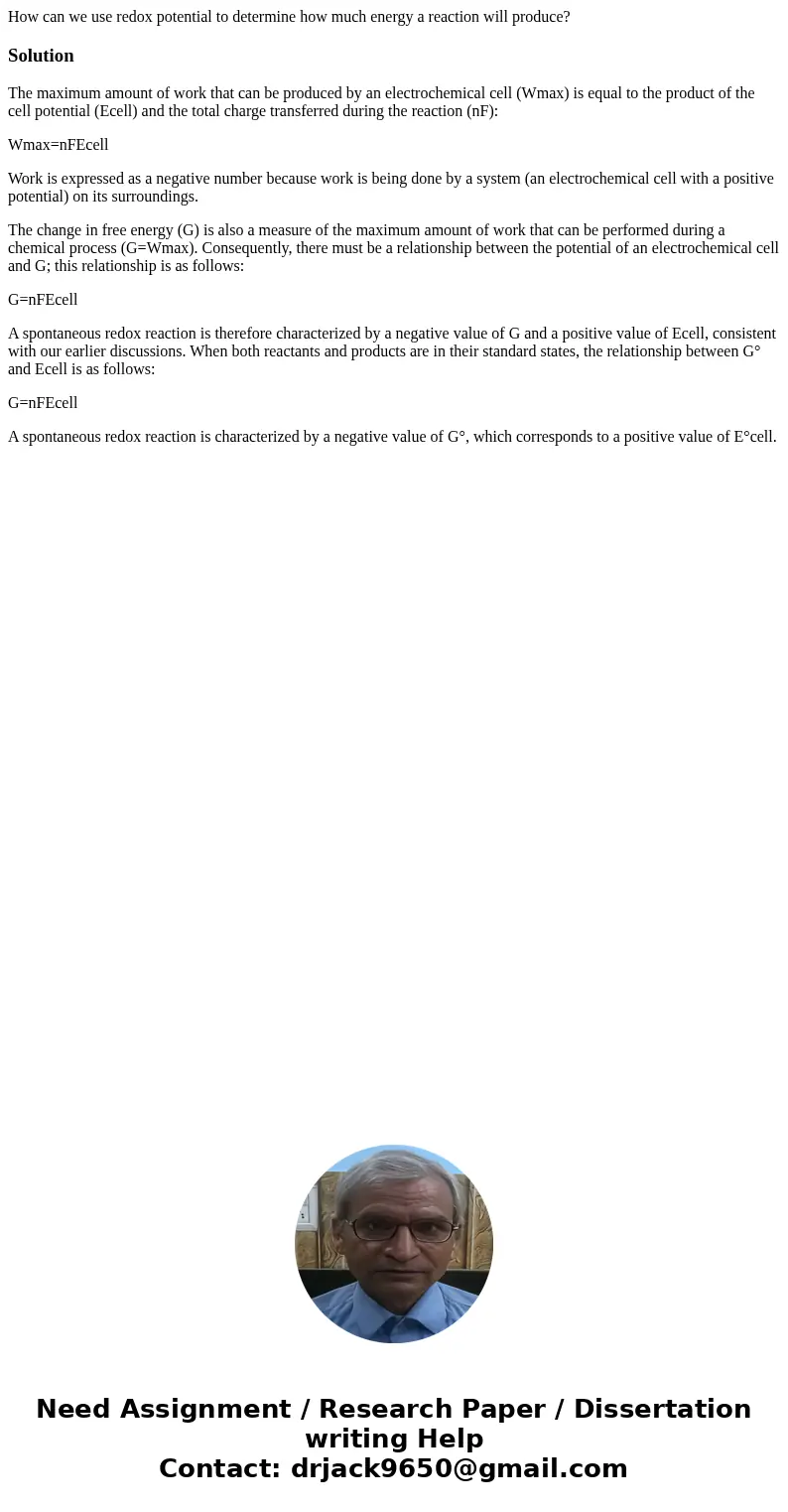How can we use redox potential to determine how much energy
How can we use redox potential to determine how much energy a reaction will produce?
Solution
The maximum amount of work that can be produced by an electrochemical cell (Wmax) is equal to the product of the cell potential (Ecell) and the total charge transferred during the reaction (nF):
Wmax=nFEcell
Work is expressed as a negative number because work is being done by a system (an electrochemical cell with a positive potential) on its surroundings.
The change in free energy (G) is also a measure of the maximum amount of work that can be performed during a chemical process (G=Wmax). Consequently, there must be a relationship between the potential of an electrochemical cell and G; this relationship is as follows:
G=nFEcell
A spontaneous redox reaction is therefore characterized by a negative value of G and a positive value of Ecell, consistent with our earlier discussions. When both reactants and products are in their standard states, the relationship between G° and Ecell is as follows:
G=nFEcell
A spontaneous redox reaction is characterized by a negative value of G°, which corresponds to a positive value of E°cell.

 Homework Sourse
Homework Sourse